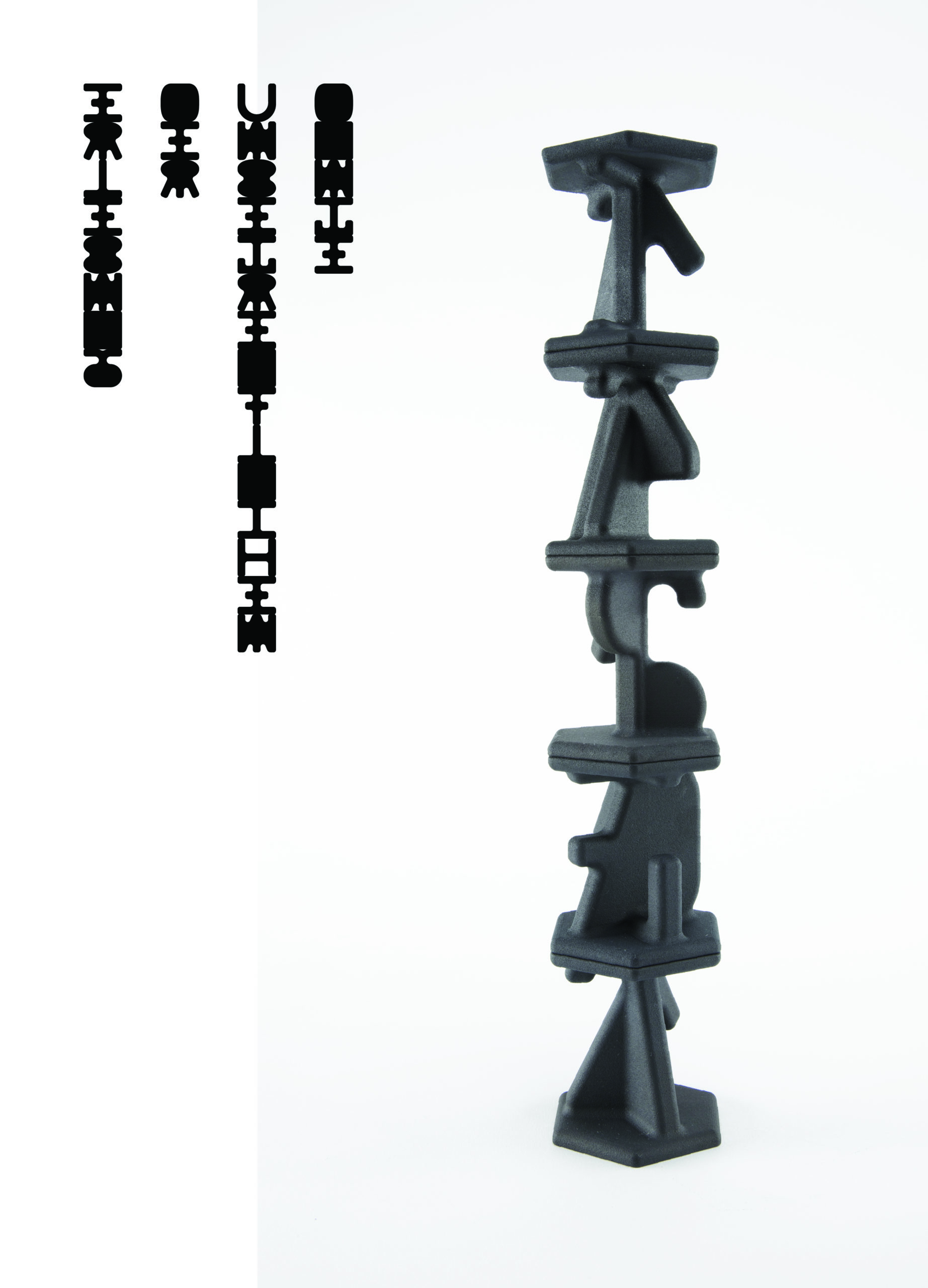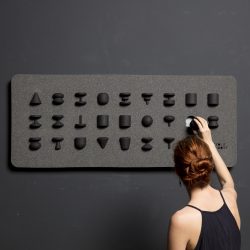alphabetum tactus – litterae odorum
Description
My master's thesis "Experience of incomprehensible things" includes a new communication with other senses. alphabetum tactus - tactile alphabet litterae odorum - olfactory alphabetWhat is the Topic?
The topic deals with a new way of communication has the impact that, alphabetum tactus: blind and sighted people communicate with each other in a playful way. litterae odorum: the smells can be assigned to letters.
Why does it look like this?
alphabetum tactus letters look so easy to read with eyes and especially with hands. No matter, how they are in the hand, because they have been developed rotationally symmetrical. litterae odorum letters can be learned and read with all senses. They always correspond to a hexagon in the base, so the letters can be read in different ways. The name of the olfactory receptor is given in one letter.
What is special?
alphabetum tactus - Touch is our first language, the first sense that we acquire. Touch is our silent interface with the material world. Touch is the third dimension of surface that speaks to our emotions. People who are deaf-blind communicate through touch-based processes, from finger spelling to exploring objects with their hands or feet. litterae odorum - all the senses have their own descriptive vocabularies, for example for sight, there is red, green, and yellow, and for taste there is sweet and sour, etc. But the sense of smell can have no descriptive vocabulary of its own. Rather, we borrow our adjectives from the other senses, so that it smells sour, or has a smell like roses, cloves or musk. They are all, however, terms drawn from other senses. Consequently, we cannot describe our sense of smell.
What is new?
alphabetum tactus is the suggestion of a new kind of sensory 3D alphabet. This new haptic font allows blind and sighted people to communicate with each other in a playful way. litterae odorum are the first characters from the olfactory alphabet, which consists of 350 letters (olfactory receptors in the nose). Quick learning of the new language is possible by the synesthetic experience.






